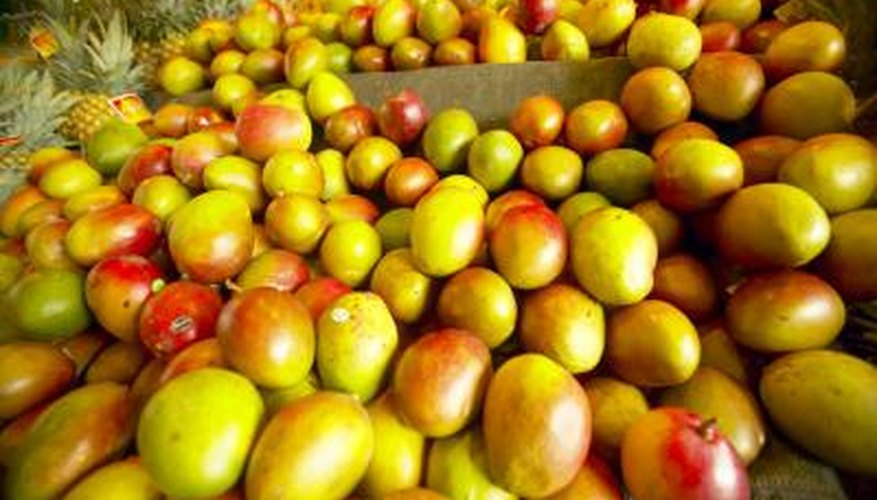Growers cull over 30 million metric tons of fruit from the world's mango trees annually. These trees. Mangifera indica, reach a mature height of 80 to 100 feet and grow throughout the Asian tropics and Oceania, including Hawaii. People in these regions use the hard, dense wood of the mango tree in a variety of applications thanks to its wide availability and sturdiness. The heaviness of mango wood is indicated in two ways, specific gravity and average dried weight.
Mango Wood Weight
Mango wood has a dried weight of 19.1 Kilogram per cubic foot, or a basic specific gravity of 0.55. Dried weight constitutes the heaviness of one cubic food of the wood once removed from the tree and left to dry. The specific gravity of wood measures the density of wood in relation to the density of water. Mango wood has a specific gravity of 0.55, meaning it is a little more than half as dense as water. The density of mango wood makes it a medium-heavy wood. The heaviest woods, or ironwoods such as Lignum Vitae, possess a specific gravity higher than 1.0, meaning they sink in water.
- Mango wood has a dried weight of 19.1 Kilogram per cubic foot, or a basic specific gravity of 0.55.
- Mango wood has a specific gravity of 0.55, meaning it is a little more than half as dense as water.
Other Mango Wood Qualities
Mango heartwood, or the wood found in the centre of the tree, ranges in colour from yellowish-brown to reddish-brown. It bears a strong resemblance to the sapwood, or exterior wood, of the tree, which can also be yellowish-brown. Some mango trees fall victim to spalting, or discolouration caused by fungi. Such specimens exhibit a panoply of heartwood colours. When freshly cut, mango wood possesses no scent. It is moderately coarse and darkens in colour upon exposure to oxygen. Mango wood exhibits a flexibility that makes it relatively easy to work with for a medium-heavy wood, lending to its popularity as a carpentry wood in its native habitat. However, it may dull saw blades on account of its high silica content.
- Mango heartwood, or the wood found in the centre of the tree, ranges in colour from yellowish-brown to reddish-brown.
Mango Wood Uses
Uses of mango wood include the construction of furniture, bowls, chopping blocks, crates, boxes, canoes, dugouts, window frames, floors, walls, ceilings, rafters, shoe heels, veneer and plywood. The heaviness of the wood makes it well suited for such construction projects. It is used more commonly in indoor construction projects than in outdoor.
Mango makes excellent charcoal, though sources warn against burning the wood before transforming it to charcoal. Smoke emitted by burning mango wood is an irritant. In Hawaii, makers of high-end ukuleles commonly use mango wood as a construction material. Spalted mango wood is marbled in appearance and used in the construction of "fine" furniture and objects.
- Uses of mango wood include the construction of furniture, bowls, chopping blocks, crates, boxes, canoes, dugouts, window frames, floors, walls, ceilings, rafters, shoe heels, veneer and plywood.
- Spalted mango wood is marbled in appearance and used in the construction of "fine" furniture and objects.
Other Mango Wood Information
In the Untied States, imported mango wood is less expensive than a number of similar exotic woods. This is attributable to its relative ubiquity in a number of regions. Mango tree bark features prominently in the production of yellow dyes used in silk through tropical Asia and in medicinal and cosmetic products. As an astringent, mango bark is an ingredient in various antiwrinkle products. Mango bark is also known to be homeostatic and antirheumatic, meaning it fights rheumatism and helps maintain cell equilibrium in ageing individuals.
- In the Untied States, imported mango wood is less expensive than a number of similar exotic woods.
- As an astringent, mango bark is an ingredient in various antiwrinkle products.
